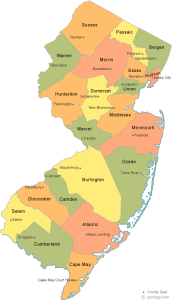People in these parts can often be heard mocking New Jersey as some sort of cultural and environmental antithesis to Vermont. But they should be aware that New Jersey gave rise to a landmark civil rights doctrine – in housing – that resonates here.
That’s the so-called Mount Laurel Doctrine, as set out in two New Jersey Supreme Court rulings in 1975 and 1983, banning economic discrimination against the poor by municipalities in their land-use and zoning decisions. The rulings came after members of the black community in Burlington County’s Mount Laurel Township sued over a housing development plan that would have uprooted them in favor of middle-class and upper-middle-class families. (The town’s zoning effectively mandated homes that low-income families could not afford.)
The Fair Share Housing Center, which was among the litigants, has called Mount Laurel “one of the most significant civil rights cases in the United States since Brown v. Board of Education.” That might sound like a self-serving characterization, and of course, the rulings applied only to New Jersey, but the court’s reasoning echoes across the country. The court pointed out in its 1975 ruling that zoning regulations, “like any police power” exercised by a public entity, must promote general welfare. The decision went on to say:
“It is plain beyond dispute that proper provision for adequate housing of all categories of people is certainly an absolute essential in promotion of the general welfare required in all local land use regulation. Further the universal and constant need for such housing is so important and of such broad public interest that the general welfare which developing municipalities like Mount Laurel must consider extends beyond their boundaries and cannot be parochially confined to the claimed good of that particular community. It has to follow that, broadly speaking, the presumptive obligation arises for each municipality affirmatively to plan and provide, by its land use regulations, the reasonable opportunity for an appropriate variety and choice of housing, including, of course, low and moderate cost housing, to meet the needs, desires and resources of all categories of people who may desire to live within its boundaries.”
The court declared that Mount Laurel “must permit multi-family housing, without bedroom or similar restrictions, as well as small dwellings on very small lots, low cost housing of other types, and, in general, high density zoning, without artificial and unjustifiable minimum requirements as to lot size, building size and the like…”
More than 60,000 affordable units have been built in New Jersey as a result of the Mount Laurel decisions. That’s nowhere near the need, and there has been plenty of pushback, which continues to this day.
Nevertheless, the principle – that land-use regulations must accommodate people of all incomes – has been adopted by other states, including Vermont. Vermont’s zoning statute states, among other things, that:
“No bylaw nor its application by an appropriate municipal panel under this chapter shall have the effect of excluding housing that meets the needs of the population as determined in the housing element of its municipal plan as required…”
Among those requirements is “addressing low and moderate income persons’ housing needs.”

